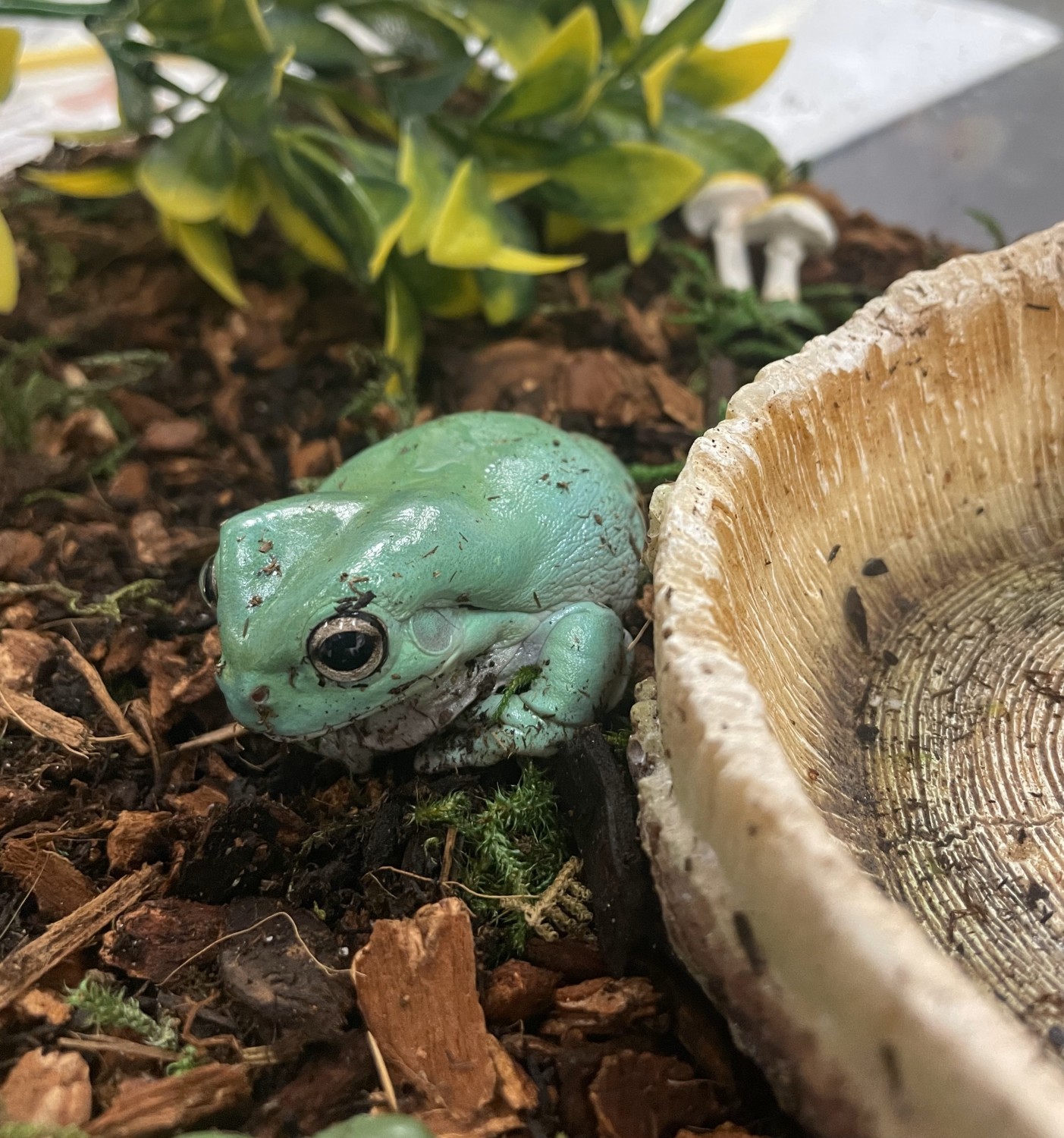The Ultimate Guide to Keeping Pet Frogs: From Tree Dwellers to Aquatic Beauties

Frogs are enchanting pets that offer a glimpse into the diverse world of amphibians. With their varied species, each with unique characteristics and care requirements, frogs provide a fascinating and rewarding experience for both novice and experienced pet owners. In this comprehensive guide, we'll cover the essentials of frog care, including habitat, feeding, supplementation, handling, and common health concerns, as well as introduce you to some of the most popular frog species kept as pets.
Habitat:
- Enclosure: The type of enclosure depends on the species. Tree frogs require a vertically oriented terrarium with branches for climbing, while aquatic frogs need a water-filled aquarium. Terrestrial frogs thrive in a horizontally oriented terrarium with ample floor space.
- Substrate: Choose a substrate that suits your frog's natural habitat. Coconut coir or sphagnum moss works well for tree frogs, while aquatic frogs need a water-based setup with a gentle filtration system.
- Temperature and Humidity: These parameters vary by species. Tree frogs generally prefer higher humidity (60-80%) and temperatures between 75-85°F (24-29°C). Aquatic frogs require stable water temperatures, usually between 70-78°F (21-26°C).
- Lighting: A 12-hour day/night cycle is essential for most frogs. Use low-intensity UVB lighting to mimic natural sunlight and support vitamin D3 synthesis.
Feeding:
- Diet: Frogs are primarily insectivores, feeding on live insects such as crickets, fruit flies, and worms. Some larger species may eat small fish or even mice.
- Frequency: Feed adult frogs 2-3 times a week, while juveniles may require daily feeding. Adjust the quantity and frequency based on your frog's species, age, and size.
Supplementation:
Supplement your frog's diet with calcium and vitamin D3 to prevent metabolic bone disease. Dust the insects with calcium powder at every feeding and use a vitamin D3 supplement once a week.
Handling:
Frogs have delicate skin that can be easily damaged by handling. Limit direct contact and use clean, moist hands when necessary. Observing your frog's behavior and natural beauty from a distance is often the best approach.
Health and Common Diseases:
- Chytrid Fungus (Chytridiomycosis): A deadly fungal infection affecting amphibians worldwide. Symptoms include lethargy and excessive skin shedding.
- Metabolic Bone Disease (MBD): Caused by calcium and vitamin D3 deficiencies, leading to weak bones and deformities.
- Bacterial Infections: Can result from poor habitat conditions or injuries. Symptoms include appetite loss, lethargy, and skin lesions.
- Parasites: Internal and external parasites can affect frogs. Regular veterinary check-ups can help identify and treat these issues.
Popular Pet Frog Species:
- American Green Tree Frog (Hyla cinerea): A beginner-friendly, small, bright green frog native to the southeastern United States.
- White's Tree Frog (Litoria caerulea): Known as the Dumpy Tree Frog, this species is native to Australia and New Guinea and is valued for its docile nature.
- Pacman Frog (Ceratophrys spp.): A South American species famous for its round shape and large mouth, suitable for beginners.
- Red-Eyed Tree Frog (Agalychnis callidryas): A striking species native to Central America, best suited for experienced keepers.
- African Dwarf Frog (Hymenochirus boettgeri): A fully aquatic, small frog native to Sub-Saharan Africa, ideal for community aquariums.
- Tomato Frog (Dyscophus antongilii): Known for its bright red-orange coloration, this species is native to Madagascar and requires a humid environment.
- Fire-Bellied Toad (Bombina orientalis): Although not a true frog, this species is native to northeastern China and Korea and is known for its vibrant coloring.
- African Clawed Frog (Xenopus laevis): A fully aquatic species native to Sub-Saharan Africa, known for its unique webbed feet.
Conclusion:
Keeping a pet frog can be a delightful and educational experience, offering insights into the fascinating world of amphibians. By providing the right care, environment, and nutrition, you can ensure a healthy and happy life for your pet frog. Whether you're drawn to the vibrant colors of a tree frog or the aquatic antics of a dwarf frog, there's a frog species out there for every enthusiast.
|